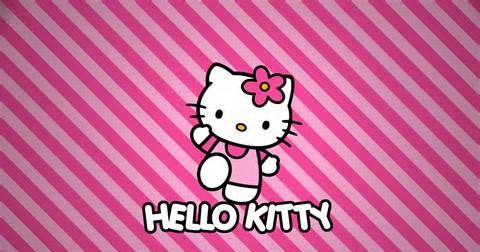三观颠覆:Hello Kitty不是猫是姑娘(双语)
|
Hello Kitty is one of the most easily recognizable characters in the history of modern culture. She's the smileless (well, mouthless) Mona Lisa. And this year, she's turning 40! But did you know that Hello Kitty is not actually a cat? No? Well that's probably not the only thing you don't know about the enigmatic Kitty. Starting in October, the Japanese American National Museum in LA will host a retrospective exhibition, entitled Hello! Exploring the Supercute World of Hello Kitty, looking at the history and influence of the character created by Yuko Shimizu in 1974. The exhibition is curated by Christine R. Yano, professor and author of Pink Globalization: Hello Kitty's Trek Across the Pacific. Yano sat down with Carolina A. Miranda at LA Times, to talk Kitty and set the record straight on a few things. Turns out Hello Kitty is not actually a cat. Which is strange because she looks like a cat and is named Kitty. But nope, that is a girl in the third grade. That's one correction Sanrio made for my script for the show. Hello Kitty is not a cat. She's a cartoon character. She is a little girl. She is a friend. But she is not a cat. She's never depicted on all fours. She walks and sits like a two-legged creature. Hello Kitty is a Brit! Her real name is Kitty White, and she was born on November 1, making her a Scorpio (the stubborn shrew). Her parents are Mary and George White, and she lives outside London. Her official height is listed as "Around 5 apples" and her weight is "Around 3 apples." She has a twin sister named Mimmy. AND SHE HAS A PET CAT NAMED CHARMMY KITTY WHO LOOKS EXACTLY LIKE HER. The cat-looking non-cat has a cat. She also has a hamster named Sugar who, um, kinda looks like a tiny, white pedobear. Hello Kitty is ubiquitous in the same way that a Calvin-peeing-on-something decal is, but cute and far more authentic. Seriously, there is a box (of twine and wire for some reason) on our kitchen table with Hello Kitty on it. She's everywhere. And she represents a very specific identity for Asian Americans. As Yano explains:"When Hello Kitty arrived in the U.S. in the mid-1970s, it was a commodity mainly in Asian enclaves: Chinatowns, Japantowns, etc.," explains Yano. "In talking to Japanese Americans who grew up in the 1970s, they say, 'That figure means so much to us because she was ours.' It's something they saw as an identity marker." |









